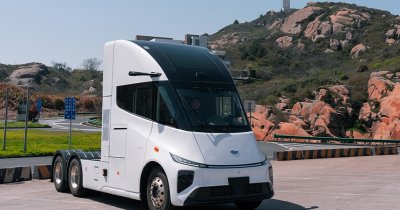In fact, according to Autoweek, the process of installing charging stations takes months of preparation and tens of thousands of dollars, since they can't be installed anywhere due to the strain they put on the power grid among other issues.
There are companies that are using computational models to find the best places where charging points for EVs can be installed in order to benefit as many drivers as possible and to prevent potential issues with the public charging system.
Volkswagen is looking at a new type of charging station for EVs, one that uses a power storage container (PSC) to deliver fast-charging, as it installed one of these models in Saxony, Germany.
The testing container is using 96 battery cells coming from ID.3 and ID.4 pre-production models, making for a total capacity of around 570 kWh. It is able to charge itself slowly from the public grid, delivering power when an EV is connected.
Karen Kutzner, managing director for finance and controlling at Volkswagen Sachsen, said that "with the power storage container, Volkswagen Sachsen is demonstrating a practical, cost-effective and useful case to enable cell modules at the end of their service lives to have a second life."
The charging point offers four 150-kW ports that can be split into two-75-kW each, which means that as much as eight EVs can charge at once at the station.
The charging point draws the required power from the public power grid and solar panels and it can be installed in places where regular charging stations are not a viable option, either from a practical or financial standpoint.
In order for this system to become competitive and allow for scalability, batteries will need to be sourced from used EVs through recycling programs.
 Mihai - Cristian Ioniță
Mihai - Cristian Ioniță












Any thoughts?